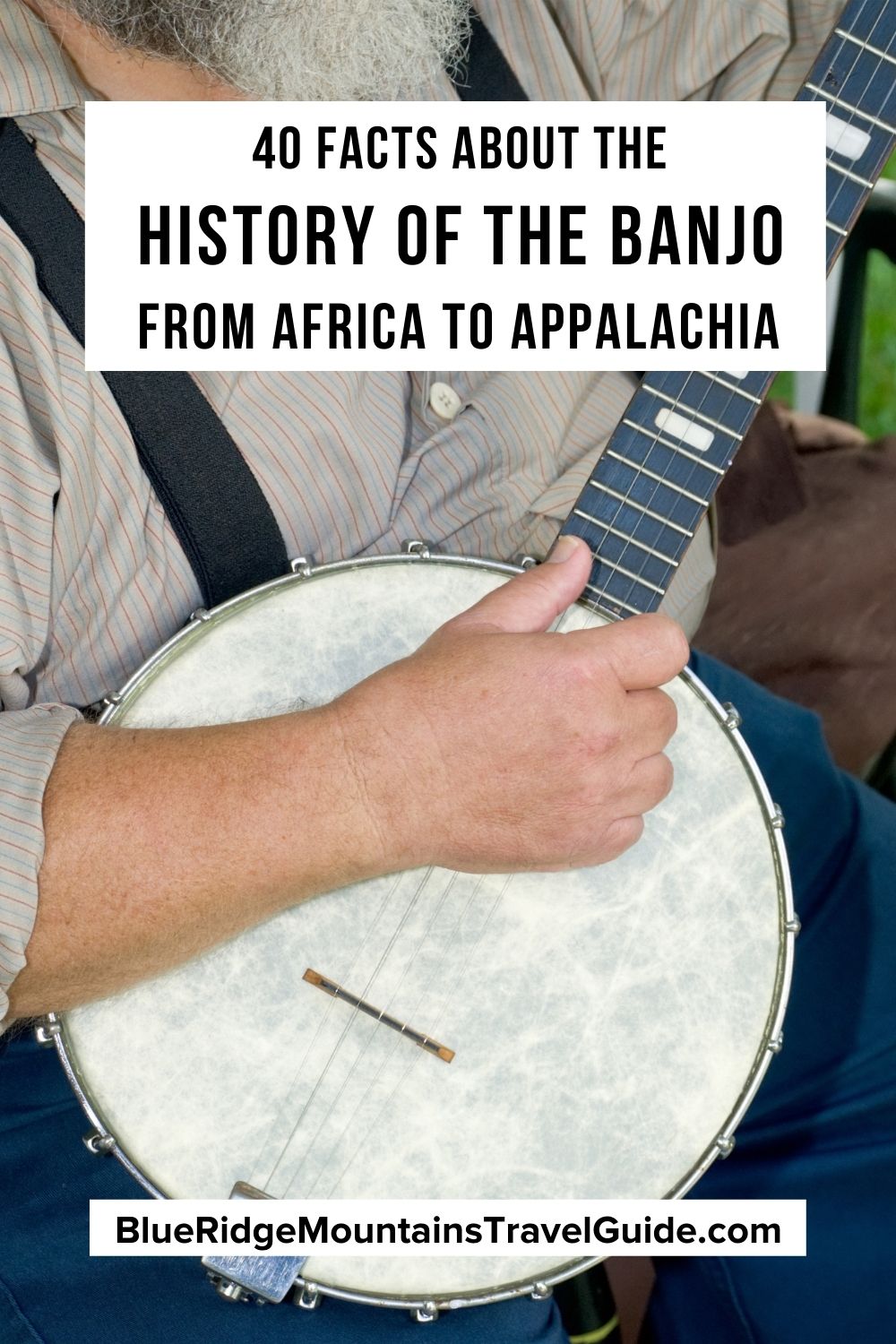American folk music, and particularly traditional Appalachian music, would be incomplete without the signature twang of the banjo.
Along with the accompaniment of the fiddle, the banjo has echoed from porches across the Blue Ridge Mountains region for centuries.
Before becoming part of larger string-band ensembles, banjos historically supplied the background music for storytelling.
Later, the banjo took on a more rhythmic role, pacing tunes as the fiddle played the melodies over them.
Both its role in music and its physical makeup as an instrument has continued to evolve over the decades.
Through the years, the banjo has held a place at the height of Appalachian culture and the popularity of bluegrass music.
But it has also been looked down upon as the lowliest of instruments. It has been both a driving force in cross-cultural collaboration and a symbol of racial division.
Whether you love it or hate it, the banjo is undeniably an important element of the Appalachian Mountains culture, the evolution of the USA, and the unique musical history of our ancestors.
Read on for 40 fascinating facts about the history of the banjo, from its ancient roots in Africa to the traditional music of the southeastern US and its recent resurgence in popularity.
READ MORE: The Appalachian Culture & History of the Blue Ridge Mountains
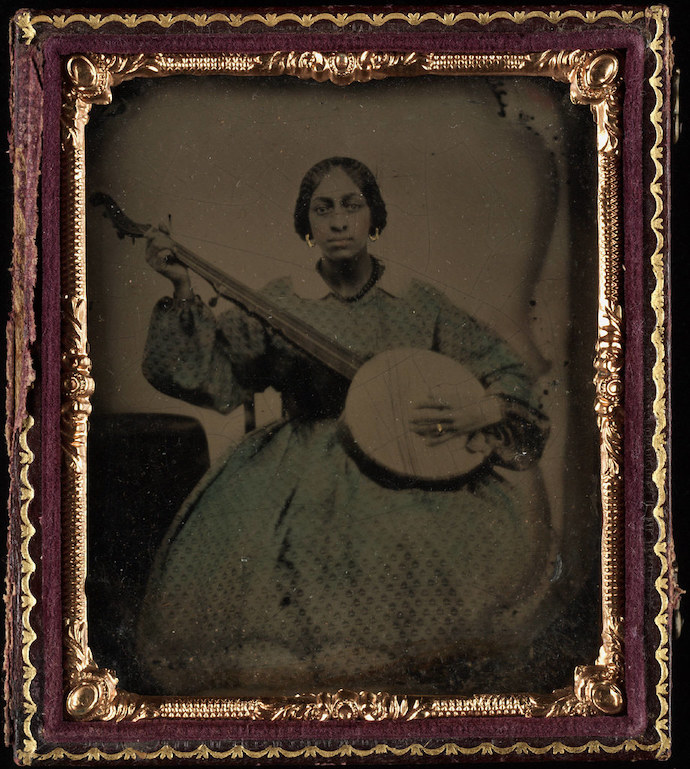
Facts about the History of the Banjo
- African Banjo History
- Appalachian Banjo History
- Styles of Playing Banjo
- Famous Banjo Players
- Famous Banjo Songs
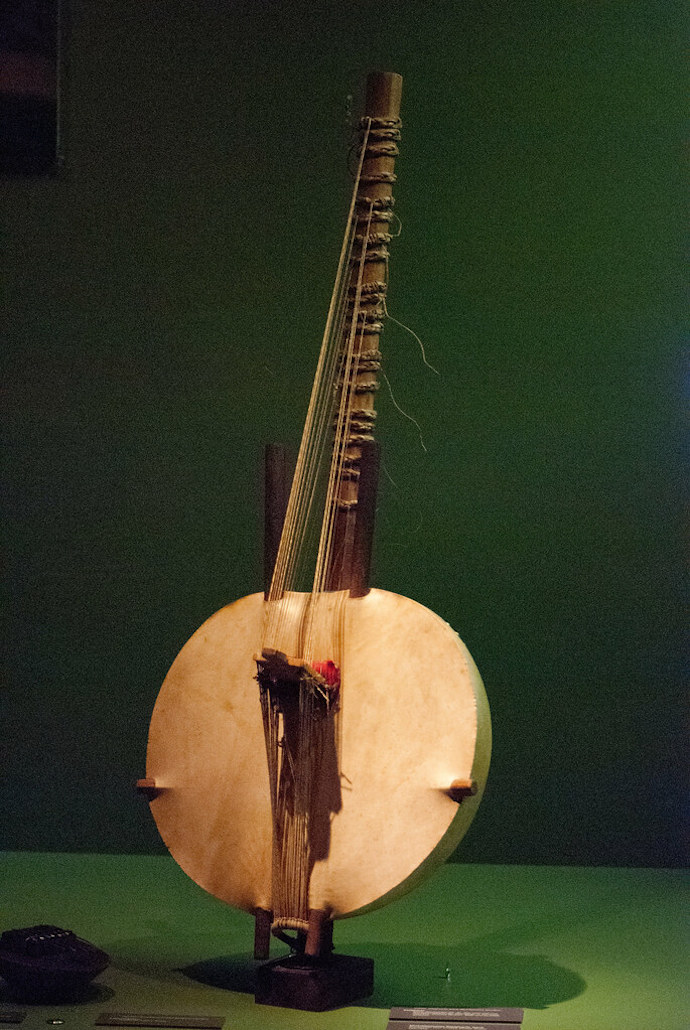
African Banjo History
1. The origins of the banjo begin in Africa, with accounts from European explorers noting a “gourd with neck and strings.” Specifically, the banjo is a West African instrument, which came to the Appalachian mountains via slavery.
2. Early African banjos varied widely, with at least 60 similar instruments that could be the inspiration for modern banjos. All had gourds for bodies and sticks as necks, with stretched animal skin over the heads. Historians don’t know exactly which, or how many, of these African banjos inspired the American banjo.
3. The most famous African versions of the banjo are the ngoni and xalam, as well as the akonting. The ngoni and xalam were used by griots, who were responsible for preserving the oral history of their tribe. The akonting was (and still is) played by average people in the Jola tribe.
4. The first gourd banjos in the Americas were documented in the Caribbean, with the Jamaican banja possibly an origin for the word banjo. Thomas Jefferson, who lived in the Blue Ridge Mountains near Waynesboro VA, noted one of his enslaved Africans playing a “banjar.”
5. Early gourd banjo instruments had different numbers of strings, necks of different lengths, and bodies with no standard size or shape. Antique depictions of them on Southern plantations suggest they had thick strings, with much deeper bass tones than modern banjos.
READ MORE: The 15 Best Things to Do in Waynesville NC
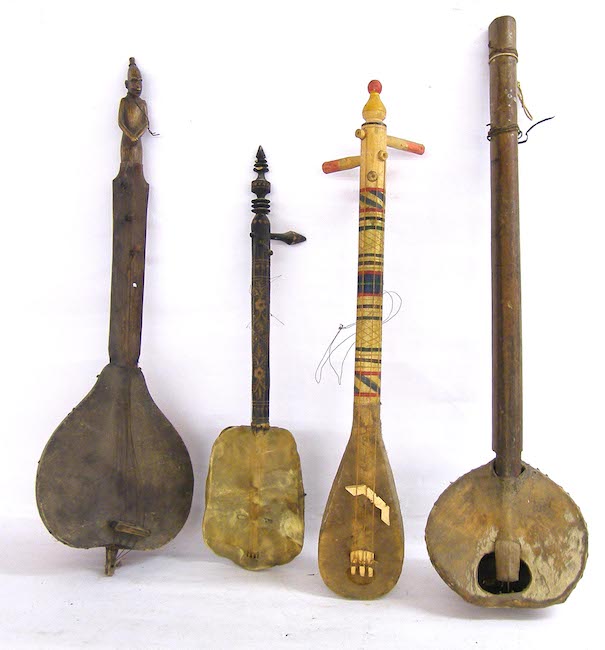
6. Banjo music was a mainstay on Southern plantations, where the instrument went through evolutionary changes during the pre-Civil War era. The necks became flattened (but remained fretless), and tuning was done using wooden pegs rather than rings that slide up and down the neck to tighten the strings.
7. Until the 19th century, the banjo was only played by African people. But in the 1820s enslavers began to prevent enslaved Africans from playing music. Instead, white minstrels in blackface began playing banjos while mocking slaves.
8. Minstrel shows were obviously extremely racially insensitive by today’s standards. And yet they existed prominently in American culture for well over a century, from the 1820s to the 1950s.
9. Despite this offensive cultural practice, the adoption of the banjo as an instrument for all races did foster advancements. The body of the banjo became a wooden box, and the head thus became more the drum-like configuration we have today.
10. Joel Walker Sweeney, an (in)famous minstrel banjo player, eventually teamed up with William Boucher, Jr. to produce the first commercially manufactured banjos. The Baltimore-based Boucher used European drum-making techniques to give the banjo its head, and also introduced a device for controlling its tone.
READ MORE: The Top 25 Blue Ridge Mountain Towns in GA & NC
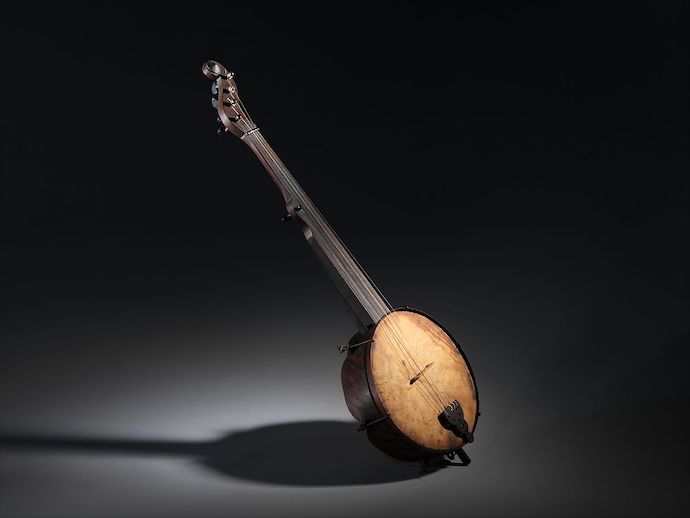
Appalachian Banjo History
11. Sweeney and his band, The Virginia Minstrels, are often credited with introducing the banjo to a larger white audience. Sweeney had picked up various styles of playing banjo from the enslaved African-Americans on his father’s farm.
12. By the 1850s, the banjo had become a staple of the U.S. music scene. Minstrel player Tom Briggs published the first book on how to play banjo, adding up-picking guitar techniques to the African downstroke technique. Frets were also added during this time, and the 5-string banjo was patented in 1849.
13. The banjo gained even more popularity after the Civil War ended, when it became a common accompaniment to the fiddle, Appalachia’s most popular instrument of the time. Soon, white people were adapting old European folk songs and fiddle classics to work on the banjo.
14. By this time the banjo was no longer just a rhythm instrument. Both black and white banjo players began to pluck individual strings, which set the foundation for traditional Appalachian banjo music today, particularly bluegrass and Old Time styles.
15. Sadly, the continuing popularity of minstrel shows after the Civil War drove many black musicians away from the instrument. For them, the banjo had become associated with degrading stereotypes rather than cultural sharing.
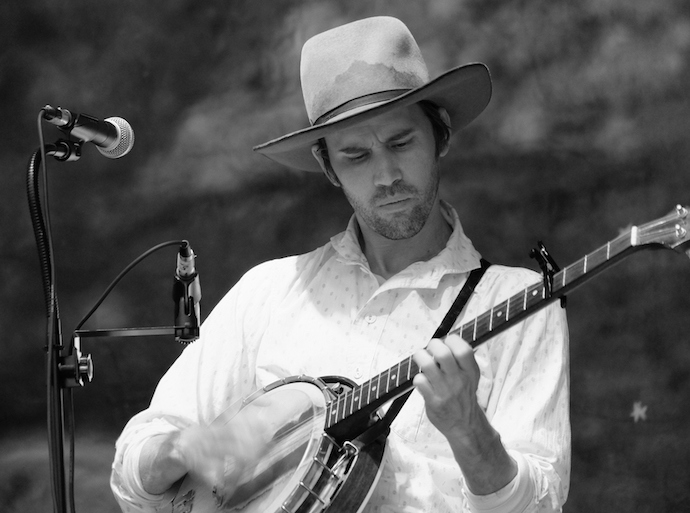
16. Between the Civil War and World War I, the banjo become increasingly popular around the world. It was incorporated into many genres of music, especially early jazz, as the banjo instrument melded ragtime and blues influences.
17. The First World War brought even more attention to jazz and the banjo, with this new American sound replacing European waltzes and classical music as the sound of the day.
18. But by the Great Depression, the banjo was falling out of favor for numerous reasons. For one, the instrument had a bright, happy sound that wasn’t appreciated as much at that time. More importantly, the archtop guitar (invented by luthier Orville Gibson) was just a fraction of the price of a banjo.
19. Soon the guitar began to replace the banjo in jazz ensembles, as Gibson’s new design was loud enough to be heard. The guitar also had a deeper sound that suited the needs of up-and-coming African-American blues musicians, such as Robert Johnson and Skip James.
20. Bluegrass legend Bill Monroe, who had many hits in the 1930s, wasn’t a big fan of the banjo (though he had one in his band). He was planning to get rid of banjo accompaniment entirely until he met the man who became the most famous banjo player in history, Earl Scruggs.
READ MORE: Appalachian Folklore, Monsters and Superstitions

Styles of Playing Banjo
21. North Carolina native Earl Scruggs introduced more stylized banjo playing. His 3-fingered picking technique set the banjo afire with a more urgent sound that forever changed the way bluegrass banjo players approached the instrument.
22. Clawhammer is another popular style of playing banjo. The name references the hand’s claw shape while playing, as well as the finger hitting the string stiffly, like a hammer. Focusing on rhythm and melody simultaneously, this style is very popular in old-time music today.
23. The Irish folk style of banjo playing is for a 4-string banjo, which is tuned the same as a fiddle or mandolin (both of which feature in Irish folk music). Tuning the banjo this way allows players to rely more on strumming than picking.
24. Dixieland jazz banjo playing can be heard in the classic compositions of New Orleans icons like Louis Armstrong. For this style, banjo players hold a single pick between the index finger and thumb. Though the banjo isn’t often thought of as a jazz instrument today, it was a major player from the late 1800s through the 1930s.
READ MORE: 30 Fun Facts About Georgia State History, Culture & More
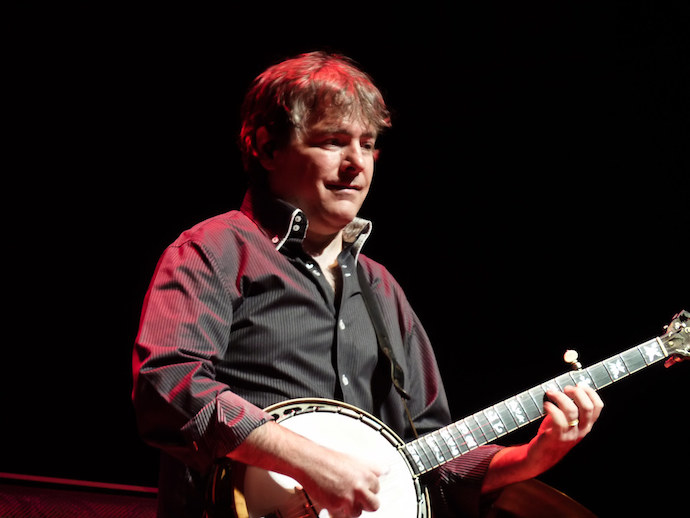
Famous Banjo Players
25. Earl Scruggs changed how a banjo is played, popularizing the high tempo and energetic picking most of us now identify as the banjo sound. His 3-finger “Scruggs style” of picking made him a virtuoso, and he was accompanying seminal bluegrass icon Bill Monroe by the age of 21.
26. John Snipes and Dink Roberts were both African-American banjo players from the state of North Carolina who mixed African and Appalachian styles playing. They often partnered together to play the banjo as a means of storytelling.
27. Born in Cherokee NC and raised in Asheville, Raymond Fairchild advanced the Scruggs style with incredibly fast finger-picking and innovation. He used the banjo to pick on, beat out rhythms, and make animal-like sounds, winning numerous awards and playing the Grand Ole Opry countless times with his Maggie Valley Boys.
28. Pete Seeger was as well-known for political activism as his skill at playing the banjo. A leader of the 1950s folk music revival, Seeger wrote How to Play the Five-String Banjo and invented the long-neck banjo. Hit songs like “If I Had A Hammer” and “This Land Is Your Land“ helped to take the Appalachian sound into the pop music mainstream.
29. Steve Martin is not just a beloved actor, comedian, and writer, but also an amazing banjo player whose albums earned 5 Grammy Awards. He’s played with Earl Scruggs, performed at the Grand Ole Opry, and often tours with a North Carolina-based band called the Steep Canyon Rangers.
30. Bela Fleck, Tony Trischka, and Rhiannon Giddens are all modern banjo virtuosos. Native New Yorkers Fleck and Trischka have both earned respect around the world for their groundbreaking ways of playing the banjo.
NC native Giddens co-founded the Carolina Chocolate Drops, is a MacArthur “Genius Grant” recipient, and is one of four black female banjo players in the group Our Native Daughters. She is at the forefront of a movement to celebrate the African-American influence on bluegrass and country music.
READ MORE: The 25 Best Western NC Small Towns To Visit (and Live In!)
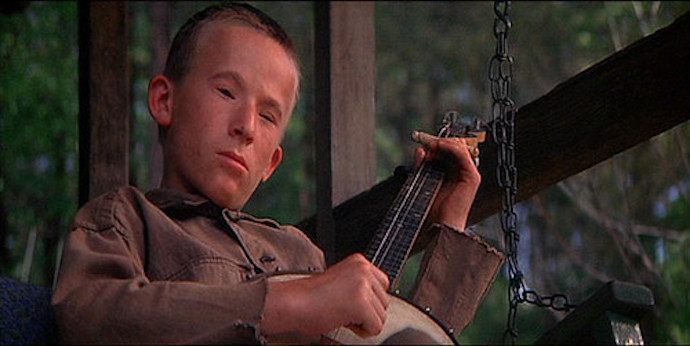
Famous Banjo Songs
31. The most famous banjo song of all time is “Dueling Banjos,” which was popularized by the 1972 white water rafting thriller, Deliverance. Originally called “Feudin’ Banjos,” the seminal version of the song featured a 4-string banjo played by Arthur “Guitar Boogie” Smith and a 5-string banjo played by Don Reno.
32. The second most famous banjo song comes from another Hollywood project– the theme song for The Beverly Hillbillies. “The Ballad of Jed Clampett” was performed by Lester Flat on guitar and vocals, with Earl Scruggs on banjo.
33. Another of Scruggs’ most famous tunes is “Foggy Mountain Breakdown,” a lively instrumental that was used in Bonnie and Clyde. Originally recorded by Flat & Scruggs and the Foggy Mountain Boys, it’s considered one of the most difficult banjo songs to play. Scruggs, with Steve Martin also on banjo, won a Grammy in 2001 for a revised version.
34. The Osborne Brothers were the first to record “Rocky Top” in 1967. The lament of an urbanite for a simple life in the mountains is now one of Tennessee’s state songs, and a classic banjo song that has been covered countless times.
35. “Whoa Mule” is an innovative song by Raymond Fairchild, who picks the banjo extraordinarily quickly, beats rhythms on the drum head, and plays with the strings in odd ways. The song has been a regular feature in TV shows over the years.
READ MORE:The Best Places to Go White Water Rafting in GA
36. Performed by another bluegrass banjo legend, “Clinch Mountain Backstep” showcases the talents of Ralph Stanley. Born in the mountain town of McClure in Southwest Virginia, Stanley played in a band called the Clinch Mountain Boys. He’s also famous for his a cappella contribution to the O Brother, Where Art Thou? soundtrack, “O Death.”
37. The banjo was featured in numerous classic rock songs. “Old Man” by Neil Young has a strong, simple banjo riff; “Bluebird” by Buffalo Springfield makes many of the lists; and Led Zeppelin’s “Gallows Pole” has Jimmy Page playing banjo and various different guitars.
38. Bela Fleck has numerous great banjo tunes in his 45-year catalogue, but “Big Country” is arguably his most recognizable song. He also reconnected the banjo to its roots in Africa in the 2008 documentary, Throw Down Your Heart, and on the excellent album of the same name.
39. Cover songs are a popular way to showcase banjo playing chops nowadays. One of the most popular examples is Steve ’n’ Seagulls’ take on AC/DC’s “Thunderstruck.” In addition to some very fast banjo picking, the cover version features the spoons, an accordion, and a mandolin.
READ MORE: The 20 Best Treehouse Rentals in the North Carolina Mountains
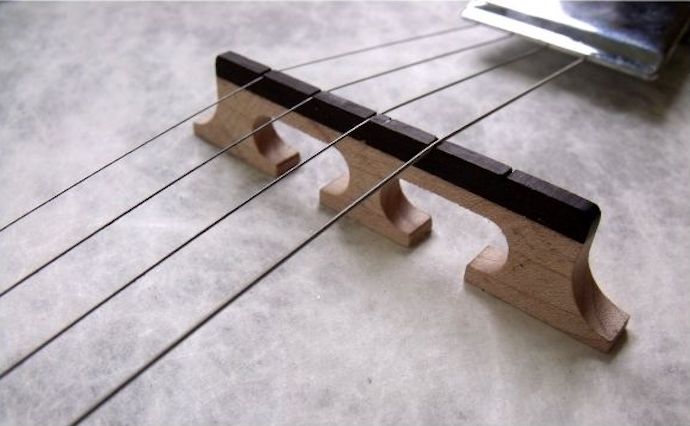
So… How Many Strings Does a Banjo Have?
40. Like the original banjos from West Africa, modern-day banjos come with varying numbers of strings.
The five-string banjo is probably the most common. But, there is a four-string version (the tenor banjo) and a six-string banjo, which plays more like a guitar. Added to the mix are hybrid banjos, like the 12-string banjo and ukulele banjo.
In other words, the banjo remains a versatile instrument for all sorts of players to enjoy, and the musical history around the banjo keeps writing itself. –Jonathon Engels, featured photo via Canva


